Last updated on
Discover the effective techniques to eliminate rust from your kitchen knives, ensuring they stay sharp and hygienic for all your culinary needs.
Welcome to my latest blog post! If you’re an avid home cook, you know that a good set of kitchen knives is essential. But over time, even the best knives can start to show signs of wear and tear, particularly rust.
Not only does rust make your knives look unsightly, but it can also affect their performance in the kitchen. Fortunately, removing rust from your kitchen knives is easier than you might think.
In this article, I’ll share with you some simple yet effective methods for getting rid of rust and restoring your knives to their former glory. So let’s get started!
Key takeaways:
- Use safety precautions when removing rust from knives.
- Identify rust by looking for discoloration or roughness on metal.
- Rust is caused by moisture and exposure to acidic substances.
- Use white vinegar, baking soda, or lemon juice and salt to remove rust.
- Properly store knives and practice regular maintenance to prevent rust.
What's Inside
Safety Precautions
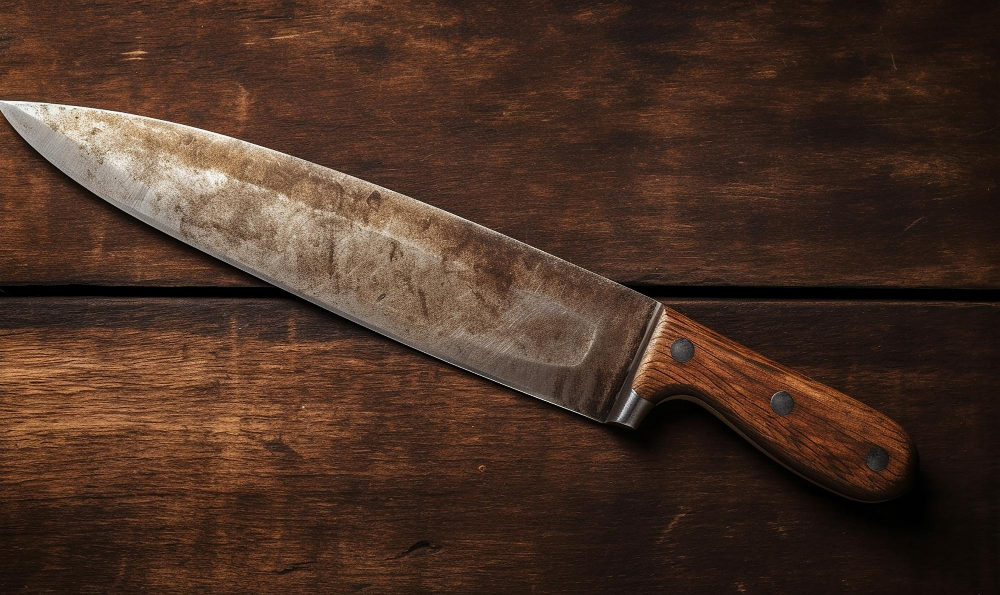
Rust removal can involve the use of chemicals and abrasives that can be harmful if not handled properly. Therefore, it is essential to wear gloves and protective eyewear when working with these substances.
Make sure you are in a well-ventilated area as some rust removers emit fumes that could cause respiratory problems. Keep children and pets away from your work area during this process.
Identifying Rust
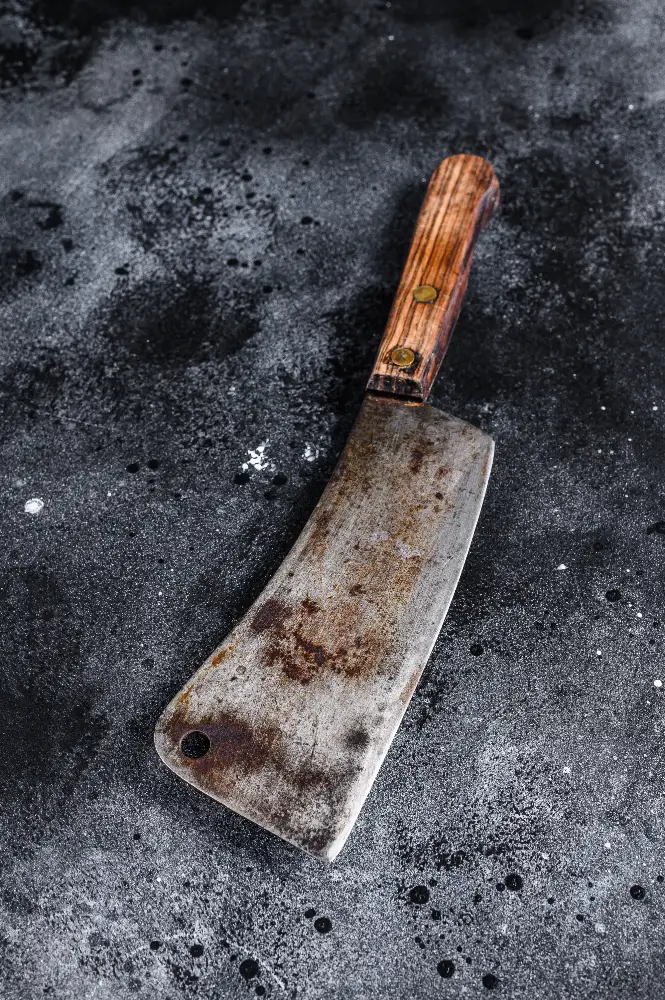
Rust is a reddish-brown coating that forms on metal when it comes into contact with oxygen and moisture. It typically appears as small spots or patches on the surface of your knife blade, handle, or other metal parts.
To identify rust on your kitchen knives, look for any discoloration or roughness in the metal surface. You may also notice tiny pits or holes in severe cases of corrosion.
Once you’ve identified the presence of rust on your knives, it’s time to take action and remove it before further damage occurs.
Causes of Rust
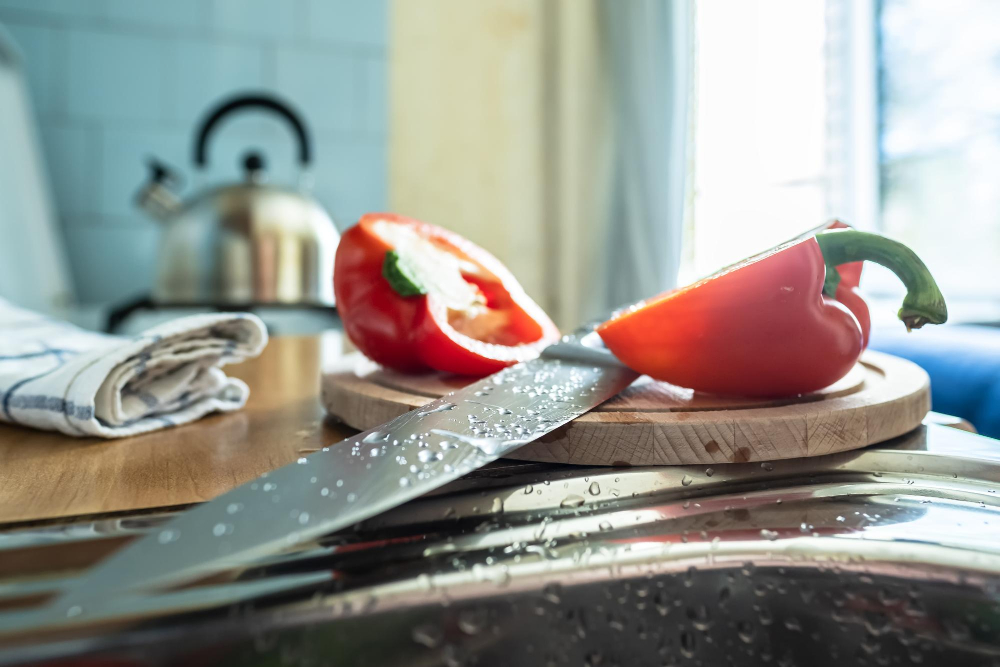
Rust is a form of corrosion that occurs when iron or steel comes into contact with moisture and oxygen. When these elements react with each other, they create iron oxide – more commonly known as rust.
In a kitchen setting, there are several factors that can contribute to the formation of rust on your knives. Exposure to water is one common cause; if you leave your knives wet after washing them or use them on damp surfaces without drying them properly afterward, they’re more likely to develop rust over time.
Another factor is exposure to acidic substances like citrus fruits and vinegar. While these ingredients are great for cleaning and cooking purposes, they can also cause damage if left in contact with metal surfaces for too long.
Using White Vinegar
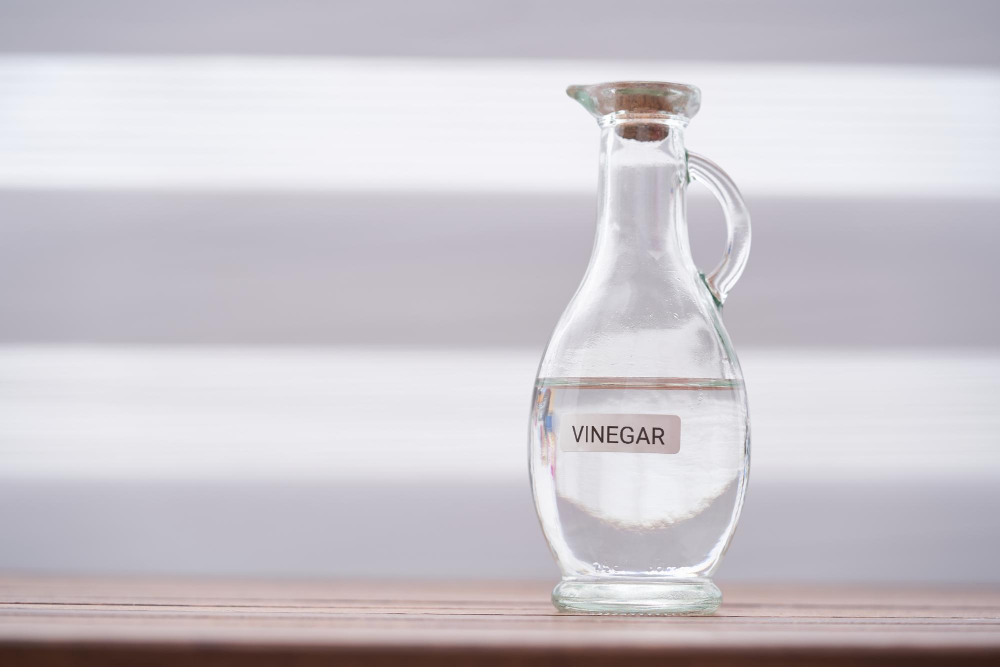
To use white vinegar to remove rust, you’ll need to follow these simple steps:.
1. Fill a container with enough white vinegar to fully submerge the rusty knife.
2. Soak the knife in the vinegar for several hours or overnight.
3. Remove the knife from the container and scrub it gently with a soft-bristled brush or sponge.
4. Rinse off any remaining residue with water and dry thoroughly before storing your newly restored knife away safely.
White vinegar works by breaking down rust molecules chemically, making them easier to remove without damaging your knives’ blades or handles in any way.
Baking Soda and Water
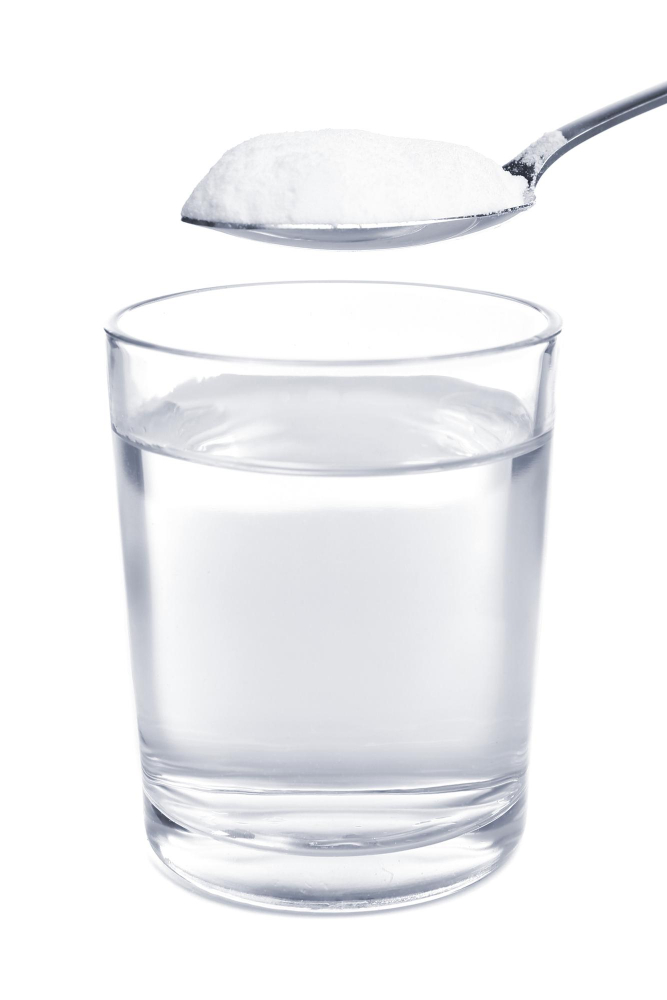
To use baking soda to remove rust, you’ll need to make a paste by mixing it with water until it forms a thick consistency. Apply the paste directly onto the rusty areas of your knife and let it sit for several hours or overnight.
Once the baking soda has had time to work its magic, use an abrasive sponge or brush to scrub away any remaining rust particles. Rinse your knife thoroughly with warm water and dry it completely before storing.
While this method may take longer than some other options on our list, such as using white vinegar or lemon juice and salt solutions, baking soda is gentle enough not to damage your knives’ blades while still being effective at removing stubborn rust stains.
Lemon Juice and Salt
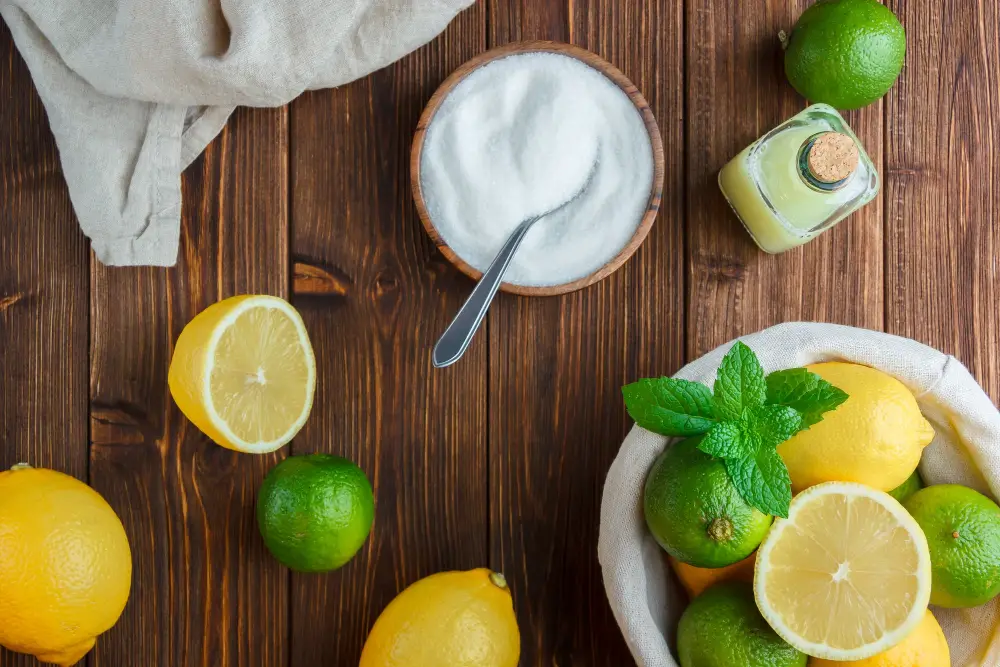
The citric acid in lemon juice helps dissolve the rust, while the abrasive nature of salt helps scrub it away. To use this method, simply mix equal parts lemon juice and salt to form a paste.
Apply the paste onto your rusty knife with a soft cloth or sponge, then let it sit for 5-10 minutes before scrubbing gently with a toothbrush or steel wool pad. Rinse off any residue with warm water and dry thoroughly.
While this method is effective at removing light surface rust, it may not work as well on more severe cases of corrosion. Using acidic substances like lemon juice too frequently can damage the metal over time if left on for too long.
Commercial Rust Removers
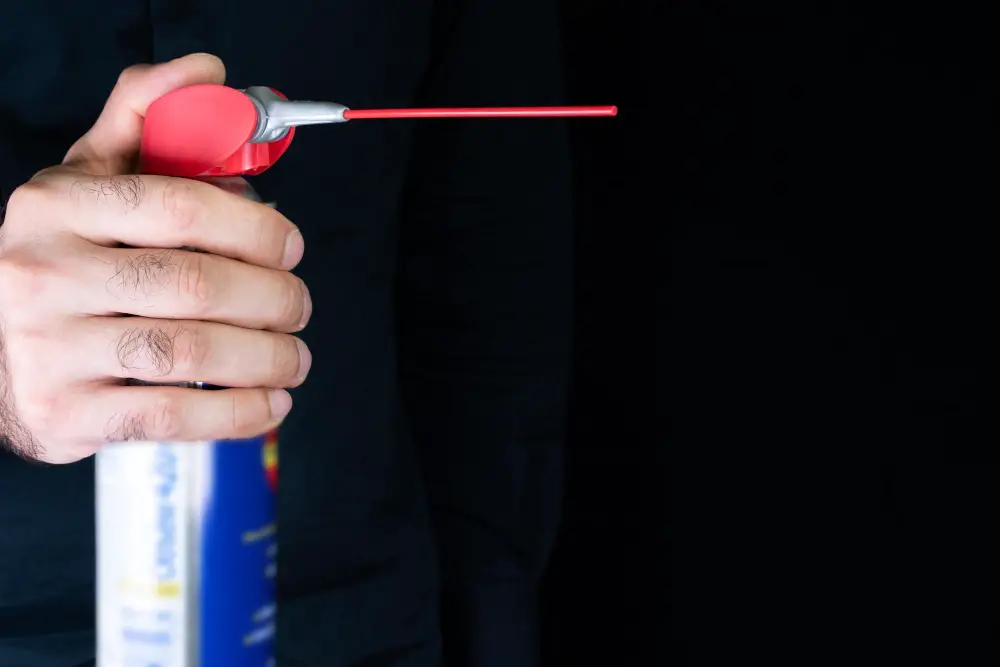
These products are specifically designed to dissolve and remove rust from metal surfaces, including knife blades. However, it’s important to note that not all commercial rust removers are created equal.
Some contain harsh chemicals that can damage your knives or pose a risk to your health if used improperly. When choosing a commercial rust remover for your kitchen knives, look for one that is safe and effective.
Read the label carefully before use and follow all instructions closely. It’s also a good idea to wear gloves and protective eyewear when working with these products.
Remember: prevention is always better than cure when it comes to removing rust from kitchen knives! Regular maintenance of your blades will help prevent corrosion in the first place so you won’t have as much need for heavy-duty solutions like commercial cleaners down the line. In our next section we’ll explore some alternative methods of removing stubborn knife blade stains without resorting solely on chemical-based solutions – let’s dive in!
Polishing With Abrasives
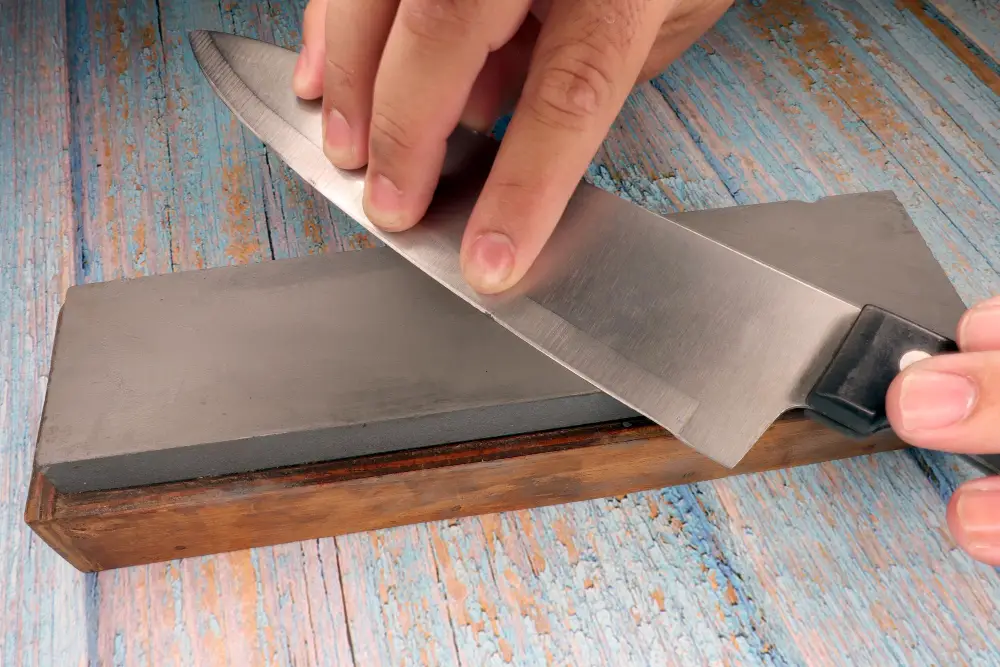
Abrasive materials like sandpaper or steel wool can be effective at removing rust, but they should be used with caution as they can scratch the surface of your knife.
To polish a rusty knife using abrasives, start by soaking the blade in white vinegar for several hours or overnight. This will help loosen and dissolve some of the rust.
Then, rinse off any remaining vinegar and dry the blade thoroughly.
Next, take a piece of fine-grit sandpaper (around 600 grit) or steel wool and gently rub it over the affected area in circular motions until all traces of rust are removed. Be sure to work slowly and carefully so that you don’t accidentally scratch your knife’s surface.
Once all visible signs of rust have been removed from your kitchen knives using abrasive materials such as sandpaper or steel wool; wash them thoroughly with soap water before drying them completely.
Using Rust-Removing Rubber
This type of rubber is specifically designed to remove surface rust and stains from metal surfaces, including your kitchen knives.
To use this method, simply rub the affected area with the rust-removing rubber until the stain disappears. Be sure to apply gentle pressure and work in small circular motions for best results.
One advantage of using a rust-removing rubber is that it doesn’t require any additional cleaning agents or chemicals. It’s also safe to use on most types of metal surfaces without causing damage or scratches.
However, keep in mind that this method may not be as effective on deep-seated or stubborn stains. In such cases, you may need to combine it with other methods like white vinegar or baking soda paste for better results.
Toothbrush and Toothpaste
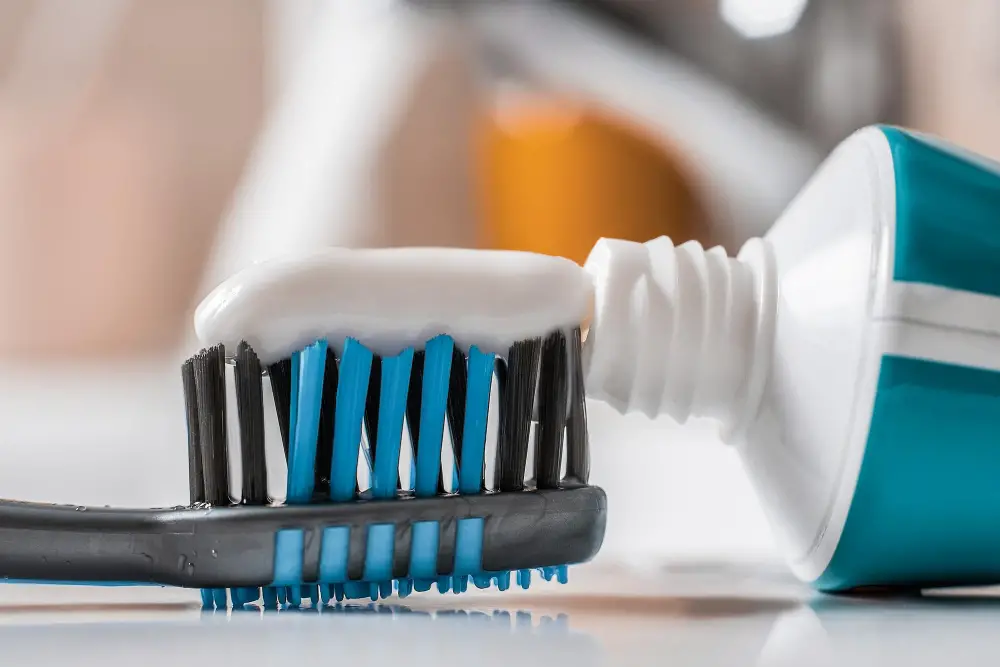
This technique works well for small areas of rust or surface stains on your knife blades. Simply apply some non-gel toothpaste to the affected area, then use an old toothbrush to scrub gently in circular motions until the rust disappears.
Rinse off with water and dry thoroughly.
While this method may not be as powerful as some of the other techniques mentioned above, it’s still worth trying if you have mild surface-level rust on your knives. Plus, it’s a great way to repurpose an old toothbrush that would otherwise go to waste!
Aluminum Foil Scrubbing
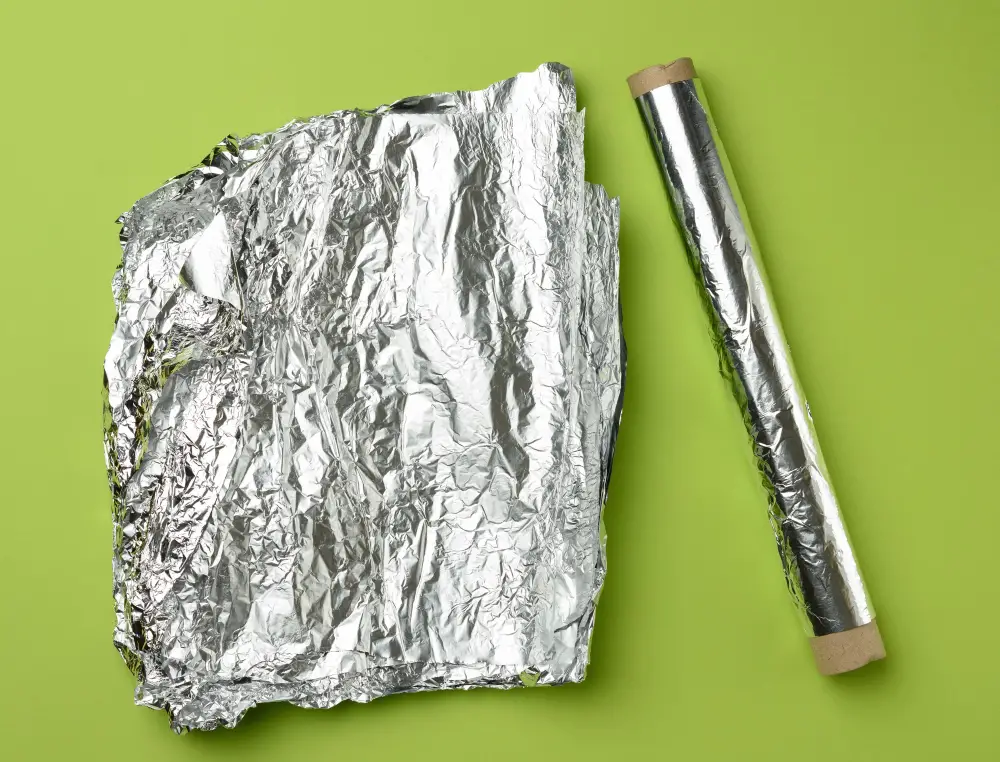
This technique involves using a ball of aluminum foil to scrub away the rust. To do this, you’ll need to crumple up a small piece of aluminum foil into a ball and then use it to gently rub the rusty areas on your knife blade.
The abrasive surface of the aluminum foil will help remove any stubborn rust spots without damaging your knife’s edge.
Be sure not to press too hard or use excessive force when scrubbing with aluminum foil as this can scratch or damage your knife’s surface. Once you’ve removed all visible signs of rust, rinse off any residue with warm water and dry thoroughly before storing.
While Aluminum Foil Scrubbing is an effective way to remove light surface-level rust from kitchen knives, it may not be suitable for heavily corroded blades that require more intensive treatment methods such as commercial-grade removers or professional sharpening services.
Knowing how to remove rust from kitchen knives is an essential skill every home cook should have in their arsenal.
Potato and Dish Soap
The oxalic acid in potatoes helps dissolve the rust, while dish soap acts as a surfactant to help loosen it. To use this method, cut a potato in half and apply dish soap on the rusty areas of your knife blade.
Rub the potato over these areas until you see some improvement, then rinse with water and dry thoroughly.
While this method may take longer than others, it is an effective way to remove light surface rust without damaging your knife’s finish or sharpness. Plus, using natural ingredients like potatoes and dish soap means you won’t have any harsh chemicals near your food preparation area.
Remember that prevention is always better than cure when it comes to rust formation on knives. After cleaning off any existing rust with one of these methods mentioned above or another technique that works for you best – make sure you store them properly by keeping them dry after each use and storing them in a cool place away from moisture.
Remove Rust With Cream of Tartar
To use this method, mix cream of tartar with water to form a paste. Apply the paste onto the rusty areas and let it sit for about 10 minutes before scrubbing with a toothbrush or sponge.
Rinse off the knife under running water and dry thoroughly.
Cream of tartar contains acidic properties that help break down rust particles, making them easier to remove from metal surfaces like your kitchen knives. This method is gentle on your blades and won’t cause any damage if done correctly.
However, keep in mind that cream of tartar may not work as effectively on heavily corroded or deeply embedded rust spots compared to other methods such as using white vinegar or commercial rust removers.
Remove Rust With Citric Acid

This method is particularly useful for removing stubborn rust stains that won’t come off with other methods. Citric acid works by breaking down the iron oxide in the rust, making it easier to remove.
To use citric acid, mix a tablespoon of citric acid powder with a cup of hot water and stir until dissolved. Soak your rusty knife in this solution for about 30 minutes or until the rust has loosened up enough to be wiped away easily.
Once you’ve removed all traces of rust from your knife, rinse it thoroughly under running water and dry it completely before storing it away. Remember always to wear gloves when handling any acidic solutions like citric acids as they can cause skin irritation if not handled properly.
Is Rust On Knives Dangerous?
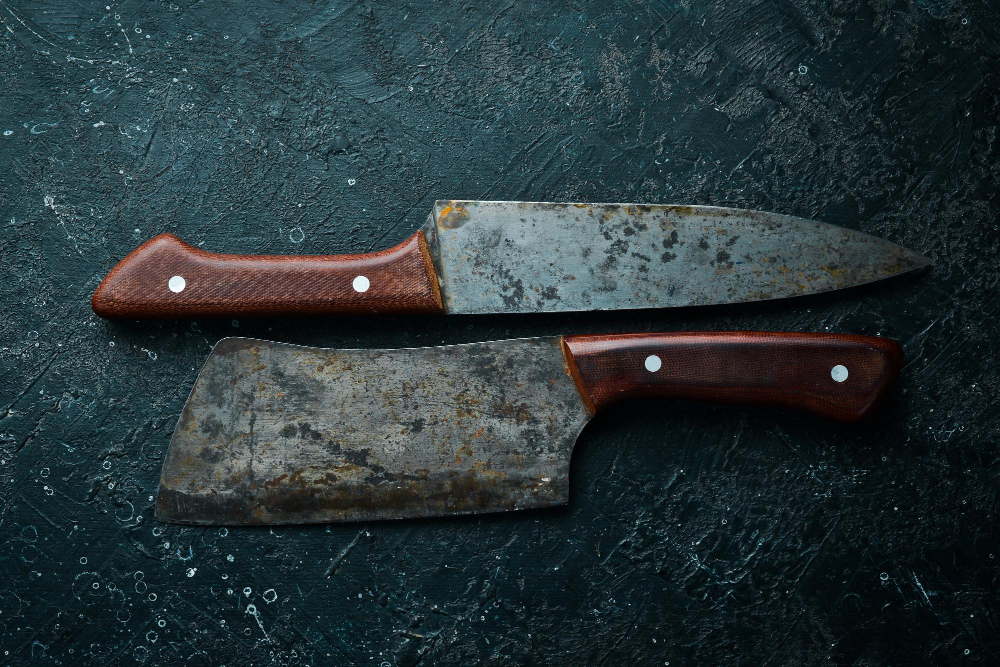
Rust on knives is not only unsightly but can also be a health hazard. When rust forms, it creates tiny crevices and pits in the metal surface where bacteria can thrive.
This means that if you use a rusty knife to prepare food, you could be introducing harmful bacteria into your meals.
Furthermore, rust weakens the blade’s structure and makes it more prone to chipping or breaking during use. A damaged knife is not only ineffective but also dangerous as it increases the risk of accidents in the kitchen.
Therefore, if you notice any signs of rust on your kitchen knives, take immediate action to remove them using one of our recommended methods below.
Preventing Rust Formation

One of the main causes of rust is exposure to moisture, so make sure your knives are completely dry before storing them away. After washing them with soap and water, use a clean towel or cloth to dry each knife thoroughly.
Another way you can prevent rust formation is by using a protective coating on your knives. You can purchase special knife oil or mineral oil for this purpose and apply it regularly after cleaning and drying your blades.
It’s also essential that you store your kitchen knives properly. Avoid leaving them in damp areas such as near sinks or dishwashers where they may be exposed to moisture for extended periods.
Proper Knife Storage
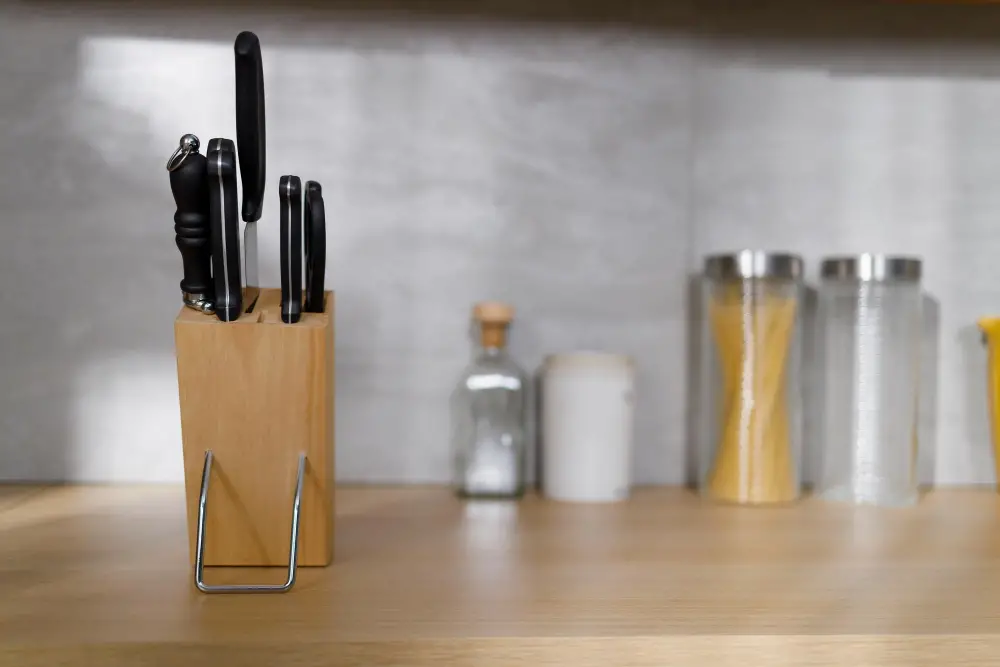
One of the most common mistakes people make is leaving their knives in a damp environment or storing them improperly. To keep your knives in top condition, always dry them thoroughly after use and store them in a knife block or on a magnetic strip away from moisture.
Another essential tip for proper knife storage is avoiding contact with other metal objects that can cause scratches and damage the blade’s edge. You can also protect your blades by using blade guards when storing individual knives inside drawers.
Regular Maintenance
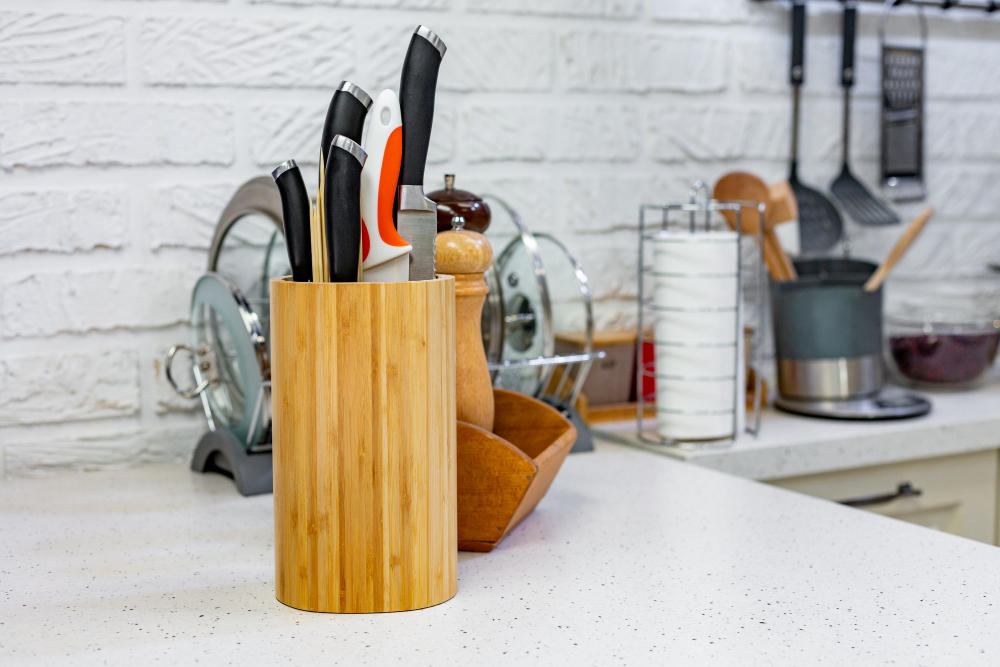
One of the best ways to do this is by practicing regular maintenance on your knives. Here are some tips:
– Clean and dry your knives after each use: This will help prevent moisture buildup, which can lead to rust formation.
– Store them properly: Keep your knives in a dry place with good air circulation. Avoid storing them in damp areas like under the sink or near a dishwasher.
– Oil them regularly: Applying oil (such as mineral oil) onto the blade and handle of your knife can help protect against corrosion.
FAQ
How do you remove rust from a knife?
Remove rust from a knife by submerging it in white vinegar overnight, then scrubbing off the rust with steel wool, a scouring pad, or a wire brush.
How do you get rust off of stainless steel?
To remove rust from stainless steel, spray the affected area with WD-40 Multi-Use Product, let it sit for a few minutes, and gently scrub with a cleaning brush or toothbrush.
Why are my kitchen knives rusting?
Your kitchen knives are rusting because they are made of metal and come into contact with water, oxygen, and possibly salty or acidic water, which leads to a natural chemical reaction causing corrosion.
What are some natural remedies for removing rust from kitchen knives?
Some natural remedies for removing rust from kitchen knives include using white vinegar, baking soda, or a mixture of lemon juice and salt.
How can you prevent rust formation on your kitchen knives?
To prevent rust formation on kitchen knives, always keep them clean, dry, and lubricate them with mineral oil occasionally.
Can a rusted kitchen knife be fully restored and sharpened for use again?
Yes, a rusted kitchen knife can be fully restored and sharpened for use again by properly removing the rust and honing the blade.




